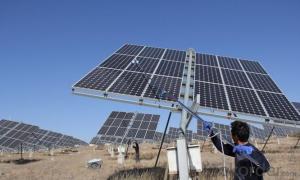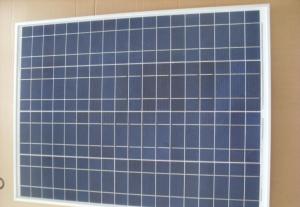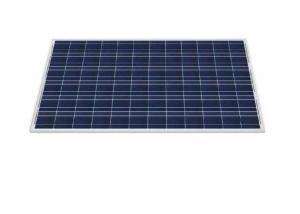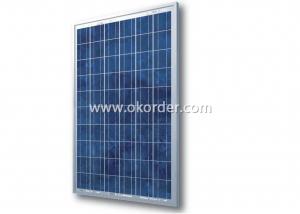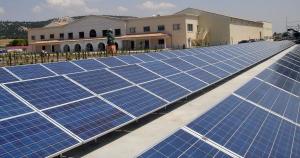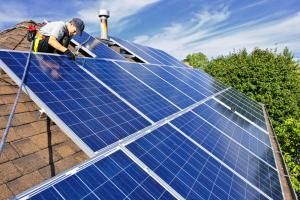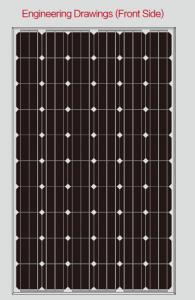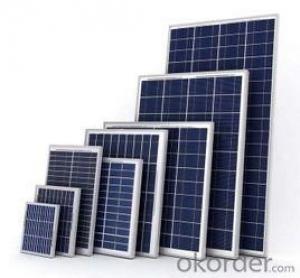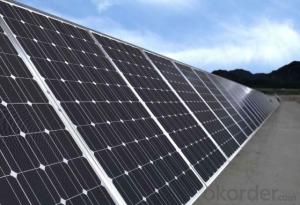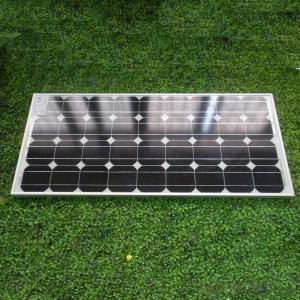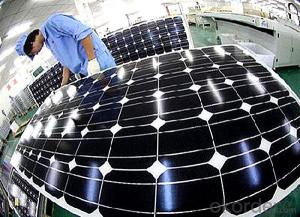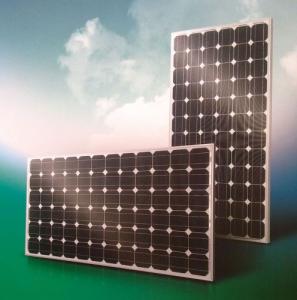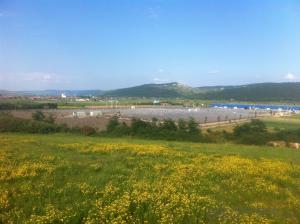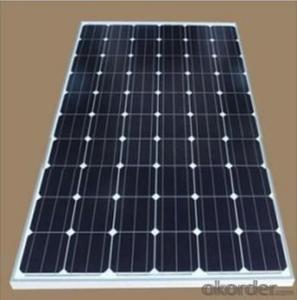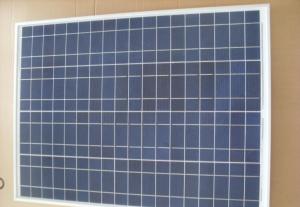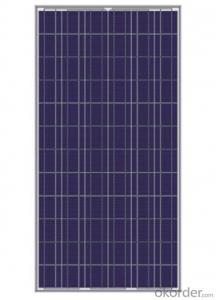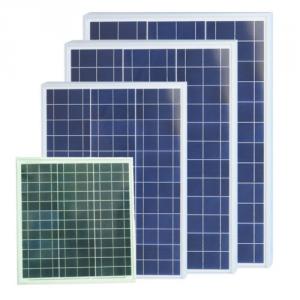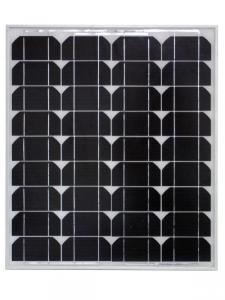150 Watt Monocrystalline PV Solar Panel CNBM 250W
- Loading Port:
- Qingdao
- Payment Terms:
- TT OR LC
- Min Order Qty:
- 10 set
- Supply Capability:
- 300000 set/month
OKorder Service Pledge
OKorder Financial Service
You Might Also Like
250W Monocrystalline PV Solar Panel
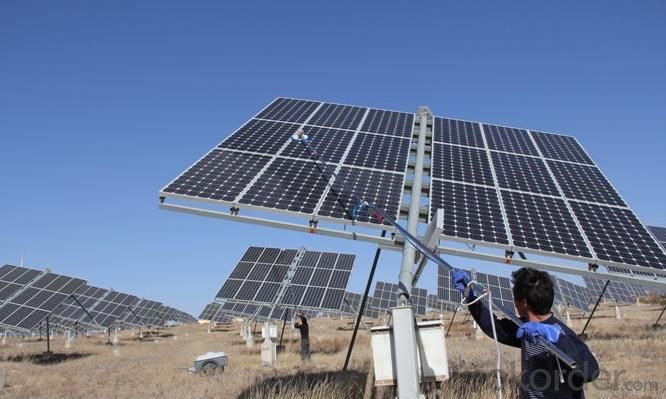
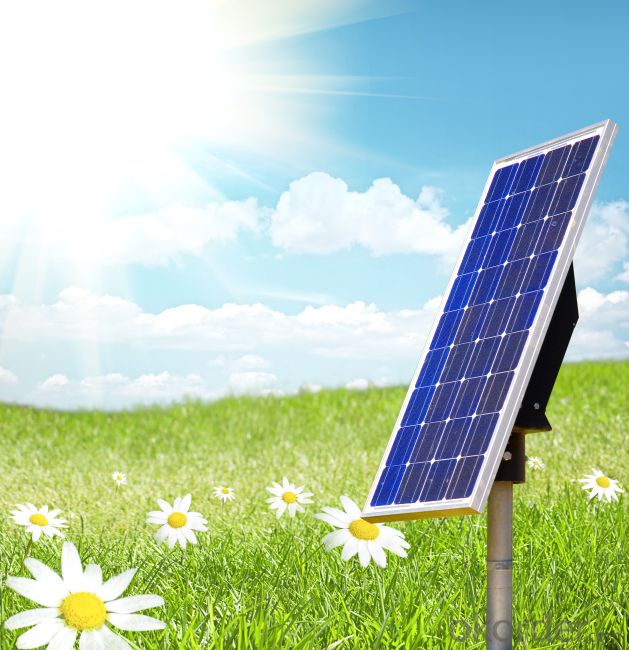
Quick Details
Place of Origin: | China (Mainland) | Brand Name: | CNBM | Model Number: | XRP-156M-250W |
Material: | Monocrystalline Silicon | Size: | 1620x992x40mm | Number of Cells: | 60 |
Max. Power: | 250w | Optimum Operating Voltage (Vmp): | 28.8V | Optimum Operating Current (Imp): | 8.68A |
Open Circuit Voltage (Voc): | 36V | Short Circuit Current (Isc): | 8.87A | Maximum Power at STC (Pmax): | 250W |
Operating Module Temperature: | -40 °C to +85 °C | Maximum System Voltage: | 1000 V DC (IEC) / 600V DC (UL) | Maximum Series Fuse Rating: | 15A |
Packaging & Delivery
Delivery Detail: | two weeks after order confirmation |
Features:
1) High Module conversion efficiency, through superior manufacturing technology
2) 0 to +5W positive tolerance for mainstream products
3) Certified to withstand high wind loads and snow loads
4) Anodized aluminum is for improving corrosion resistance
5) Anti-reflective, Highly transparent, low iron tempered glass
6) Excellent performance under low light environment
Benefit:
25-year performance warrant
10-year Product warranty
Electrical Characteristics:
Item No. | XRM-250W |
Optimum Operating Voltage (Vmp) | 28.8V |
Optimum Operating Current (Imp) | 8.68A |
Open Circuit Voltage (Voc) | 36V |
Short Circuit Current (Isc) | 8.87A |
Maximum Power at STC (Pmax) | 250W |
Cell Efficiency | 17.70% |
Operating Module Temperature | -40 °C to +85 °C |
Maximum System Voltage | 1000 V DC (IEC) / 600V DC (UL) |
Maximum Series Fuse Rating | 15A |
Power Tolerance | 0/+5 % |
STC: lrradiance 1000 W/m2, module temperature 25 °C, AM=1.5;
Best in Class AAA solar simulator (IEC 60904-9) used, power measurement uncertainty is within +/- 3%
Mechanical Characteristics:
No. of Cells | 60(6X10) |
Dimensions | 1640x992x40MM |
Weight | 20.0KGS |
Front | Glass 4.0 mm tempered glass |
Frame | Anodized aluminium alloy |
Temperature Characteristics:
Nominal Operating Cell Temperature (NOCT) | 45±2°C |
Temperature Coefficient of Pmax | -0.44 %/°C |
Temperature Coefficient of Voc | -0.33 %/°C |
Temperature Coefficient of Isc | 0.055 %/°C |
Refer to the Wmp range
Our factory can produce solar panel and solar module from 1.5W-290w (1.5w, 2.5w, 5w, 10w, 20w, 40w, 50w, 60w, 80w, 85w, 125w, 135w, 150w, 165w, 180w), according to customers requirement.
(A). Wmp range: 0.01W-6W, to be sealed with epoxy resin on PCB (printed circuit board), or to be sealed in plastic directly.
(B). Wmp range: 0.01W-15W, to be encapsulated with PET, on PCB (printed circuit board)
(C). Wmp range: 1W-60W, to be encapsulated with PET, on stainless steel, with holes for assembling purpose.
(D). Wmp range: 1W-290W, to be encapsulated with tempered glass, EVA, TPT, together with aluminium frame, junction box and (if necessary)diode and cable.
Refer to the material:
Monocrystalline solar cell or polycrystalline solar cell
Efficiency range 14%-17%, cell size 5/6.
- Q: I want to know how you can store energy using a solar panel. The energy stored needs to be stored so that a light or laptop charger can plug in to it.
- Batteries my man... but you will need a charge controller the silicon panel will produce dc and you will need an inverter for an ac light
- Q: Can solar panels be installed on a barn or shed?
- Yes, solar panels can be installed on a barn or shed. In fact, barns and sheds are often ideal locations for solar panel installations due to their large, open rooftops that receive ample sunlight. Installing solar panels on a barn or shed can help generate clean and renewable energy while utilizing otherwise unused space.
- Q: how much would you pay for a 2'x4' solar panel that puts out 24 volts and 74 watts?
- Build okorder /
- Q: Can solar panels be installed on ski resorts?
- Yes, solar panels can be installed on ski resorts. In fact, many ski resorts have already implemented solar energy systems to reduce their reliance on traditional energy sources and lower their carbon footprint. Solar panels can be installed on rooftops, parking structures, or open spaces within the resort premises, providing clean and renewable energy to power various operations, such as lifts, lighting, and heating systems.
- Q: What is the principle of solar panels to convert solar energy into electricity?
- scientists have applied solar cells to space technology - communication satellites. At the end of the last century, in the process of human self-reflection, this clean and direct energy form for photovoltaic power generation has become more cordial, Not only in space applications, in many areas also show their talents. Such as: solar garden lights, solar power generation system, the village power supply independent system, photovoltaic pumps (drinking water or irrigation), communication power, oil pipeline cathodic protection,
- Q: Can solar panels be installed on metal roofs?
- Yes, solar panels can be installed on metal roofs. In fact, metal roofs are often a great choice for solar panel installations due to their durability and long lifespan. Additionally, the smooth surface of metal roofs makes it easier to secure and position the panels, maximizing sunlight exposure and energy generation.
- Q: Main questions: How can I work out the efficiency of a solar panel and how can I work out if the panel is relatively cost-effective? Also what type of solar panels is considered most effiecient?Let's assume that all relative values are available.Secondary question: What type of safety regulations and licenses are required to be fulfiled in order to import solar panels into the EU from non-EU countries?
- Guide okorder /
- Q: Can solar panels be installed on a restaurant or food service establishment?
- Yes, solar panels can be installed on a restaurant or food service establishment. In fact, many businesses in the food industry are turning to solar power as a sustainable and cost-effective energy solution. Solar panels can be mounted on the roof or other suitable areas of the building to generate clean electricity, reducing the establishment's reliance on traditional power sources and lowering energy costs.
- Q: Does anyone know the earnings potential for the actual fitter of pv solar panels,and the electricians earnings.ty.
- it depends on your solar panel, but you can sure supply most if all of your electronics and electric stuff in your house on a sunny day. If you want to know exactly how much power it supplies and how much $$ you can save you simply have to calculate how much power your home consumes per day/month. I know of people totally reliable on solar power for their home and I too will put solar panels on my home one day.
- Q: How does the size of a solar panel affect its performance?
- The size of a solar panel directly affects its performance as a larger panel can capture more sunlight and generate a higher amount of electricity. A larger surface area allows for more solar cells to be integrated, resulting in increased energy production. Additionally, a larger panel can accommodate more efficient components and have a lower resistance, leading to improved overall performance.
Send your message to us
150 Watt Monocrystalline PV Solar Panel CNBM 250W
- Loading Port:
- Qingdao
- Payment Terms:
- TT OR LC
- Min Order Qty:
- 10 set
- Supply Capability:
- 300000 set/month
OKorder Service Pledge
OKorder Financial Service
Similar products
Hot products
Hot Searches
Related keywords
